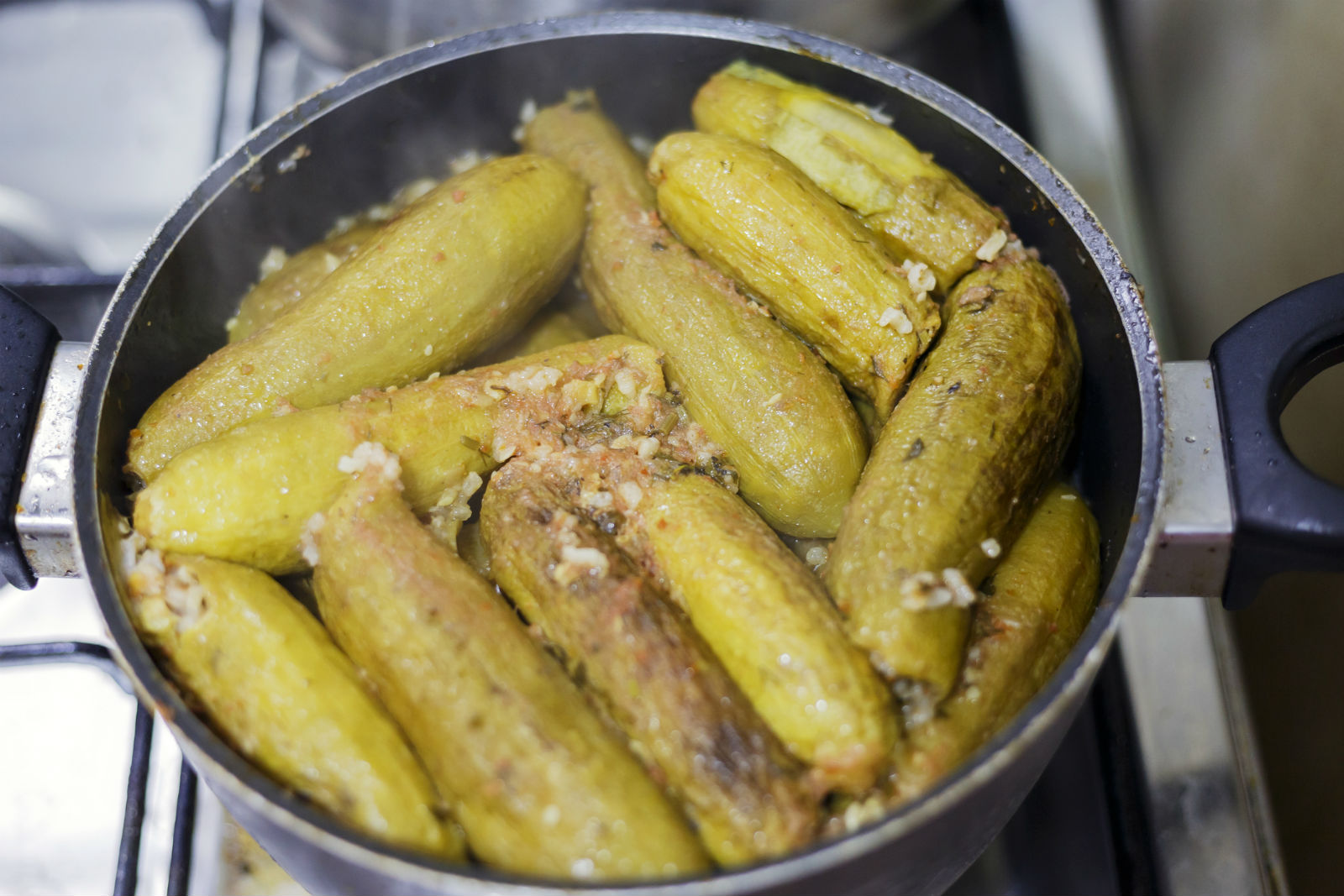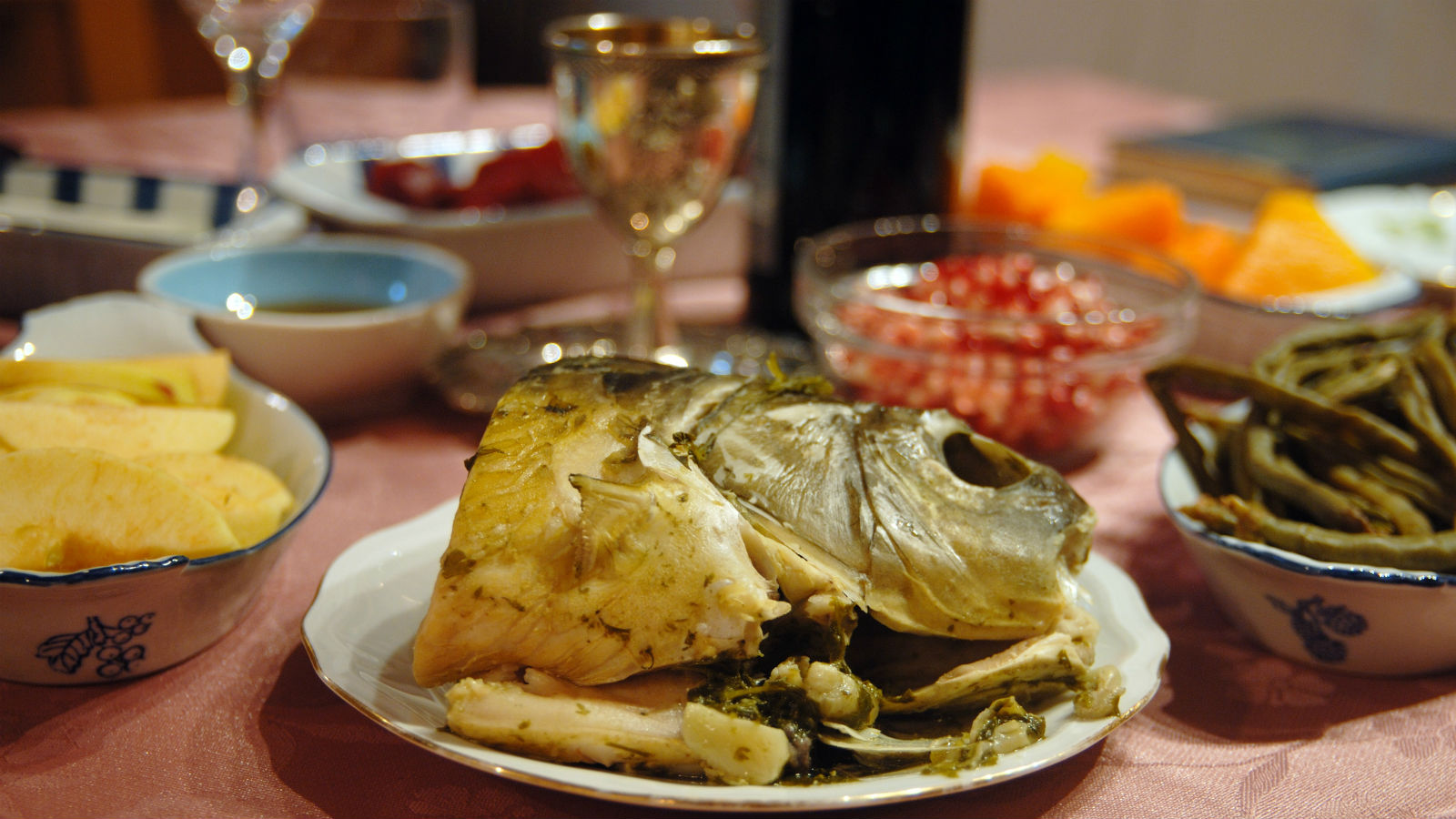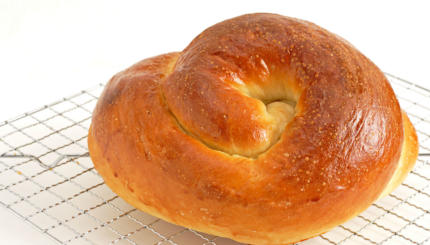If you have never been to a Sephardic Jewish home for Rosh Hashanah, make a friend with roots in Syria or Iraq and get yourself invited. The food is sublime, and the courses go on forever. That is because when celebrating the New Year, Middle Eastern Jews have more than a meal: They have a seder.
As with the Passover meal, the Rosh Hashanah seder features symbolic foods before the festive meal, a custom that goes back about 1800 years to when the Jewish sages of Babylon, present day Iraq, were writing the Talmud. They decided to ask God for peace and prosperity, and to use food as the vehicle for doing so.
In honor of Rosh Hashanah, Jews from Eastern Europe prepare sweet foods like apples dipped in honey for a sweet year. Sephardic and Mizrahi Jews take their requests many steps further. At their Rosh Hashanah seder, several foods have symbolic meanings and each is accompanied by its own blessing. Basically, once you have eaten the required foods and said the requisite blessings, you are protected from any enemies for the year!
How are the foods chosen for this Rosh Hashanah seder? By name, in Aramaic, which was the language of the Jews of Babylon at the time these blessings were written. The word for beet in Aramaic (and in Hebrew) is “selek” which has the same roots as the word for “get rid of,” so the blessing that asks God to get rid of one’s enemies is said over beets.
Do you want your year filled with good deeds? Eat a pomegranate, packed with seeds as numerous as the commandments in the Torah. And if you want to be sure to succeed? Eat a fish head or a part of an animal’s head — cow tongue, anyone? — so that you finish the year as a head and not as a tail. The word for bean in Aramaic is related to the word for increase, so by eating string beans or black-eyed peas, you are asking for your merits to increase.
Alicia Assa, the author of the cookbook Sabores de Mexico, comes from a Syrian Jewish family that made its way to Mexico at the start of the 20th century. Her family had been in Syria since their expulsion from Spain in 1492, and they brought their customs and foods with them. Still today, Alicia’s family makes a Rosh Hashanah seder of carefully cooked symbolic foods, just as her grandparents and their grandparents made theirs.
At Alicia’s Rosh Hashanah table, you will find stuffed vegetables like cabbage, zucchini, or grape leaves. The sauce is sweetened with apricots, prunes, and tamarind. And for the rest of the meal, the symbolic foods are incorporated in the dishes. Iranian rice is mixed with orange peel and pomegranate. String beans with tomato sauce and garlic are served at the start of the meal and in the meal itself. Swiss chard, beets, dates — symbolic foods all — are served in a variety of ways.
But be warned. Before you get to the sweet stuffed vegetables, expect to see a fish head. And to bless it.

Alicia Assa’s Stuffed Zucchini with Sweet Apricot Prune Sauce
Ingredients
For the zucchini:
- 8 medium zucchini, lightly peeled so that the zucchini looks striped, and cored. Leave ¼” thick shell all around the cored center of the zucchini
- I/2 pound ground beef
- 1 cup rice (not pre-cooked), soaked in hot water for one hour, and then drained
- 1 tsp Arabic allspice (available in specialty or spice stores)
- One pinch kosher salt
- 2 Tbsp vegetable oil
For the sauce:
- 1 1/2 cups of water
- 4 Tbsp tamarind sauce (available in specialty stores)
- 1 Tbsp lemon juice
- 1 Tbsp sugar
- One pinch of salt
- 8 dried Turkish apricots
- 8 dried pitted prunes
Directions
- Pre-heat the oven to 350 degrees.
- Mix the ground beef, rice, allspice and salt with your hands and stuff the mixture into the center of the zucchini so that it is 3/4 full. Note: You can keep the raw, stuffed zucchini in the freezer until you are ready to cook them.
- Heat the vegetable oil in a frying pan. Sear the stuffed zucchini over medium heat until they brown a bit. Place the browned, stuffed zucchini in a baking dish.
- Mix all sauce ingredients in a bowl. Pour over the zucchini and bake, covered, until juices have cooked down and meat is tender, about 2 hours.





